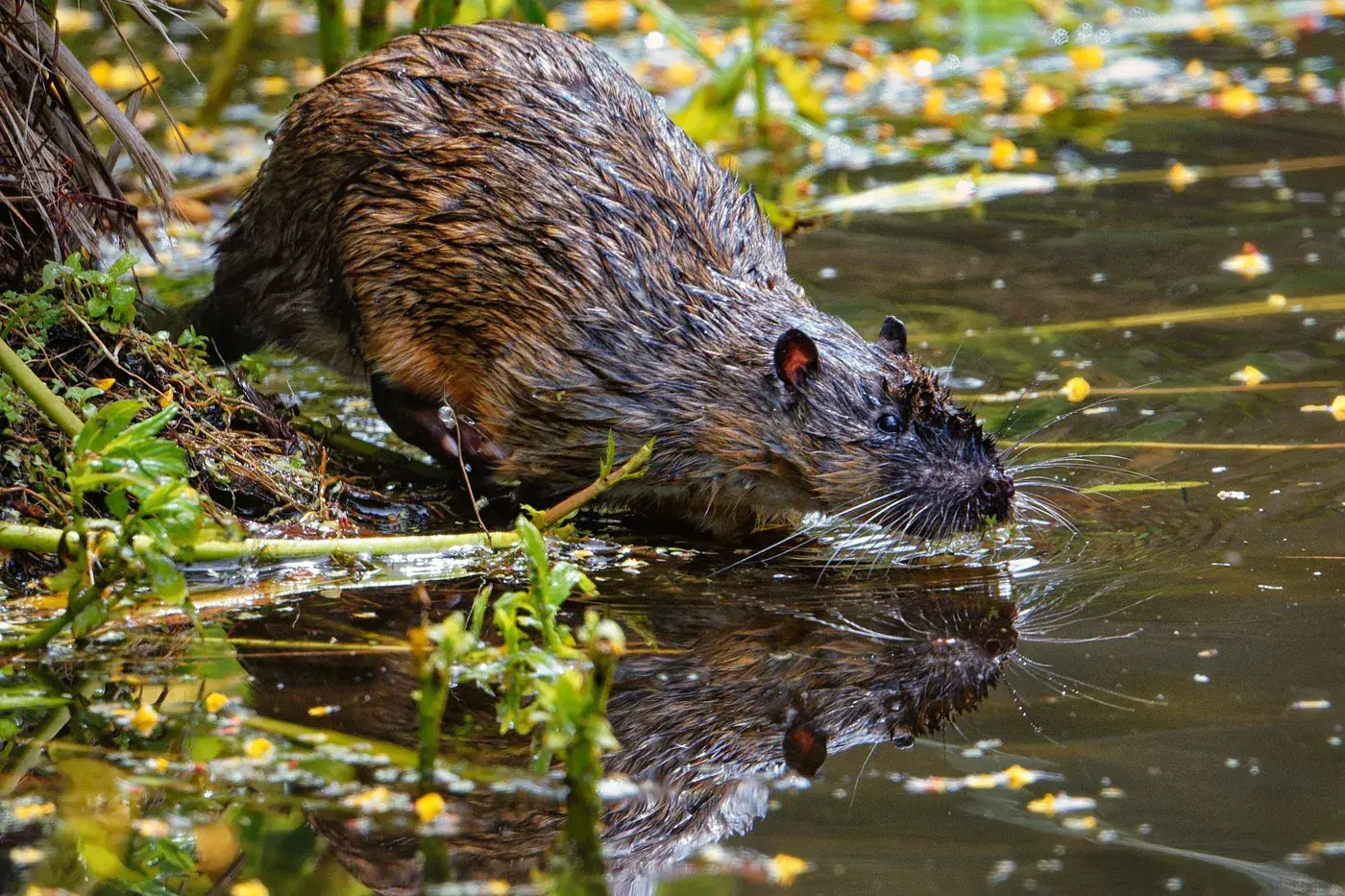The rakali (Hydromys chrysogaster) is Australia's largest rodent.
-
The rakali (Hydromys chrysogaster) is Australia's largest rodent. They eat shellfish, fish and other aquatic animals.
But they've also figured out how to eat toxic cane toads safely. They make an incision into the stomach, then remove and eat the heart and liver.
Cute, or what?
They have also just topped a poll for “Australia’s favourite underrated native animal”:
Rakali crowned Australia's most underrated animal — as it happened
The fantastic water rat — the rakali — takes the win in our poll for Australia's most underrated animal this National Science Week. Find out how it all went down.

(www.abc.net.au)
-
The rakali (Hydromys chrysogaster) is Australia's largest rodent. They eat shellfish, fish and other aquatic animals.
But they've also figured out how to eat toxic cane toads safely. They make an incision into the stomach, then remove and eat the heart and liver.
Cute, or what?
They have also just topped a poll for “Australia’s favourite underrated native animal”:
Rakali crowned Australia's most underrated animal — as it happened
The fantastic water rat — the rakali — takes the win in our poll for Australia's most underrated animal this National Science Week. Find out how it all went down.

(www.abc.net.au)
@gregeganSF Have you read this amazing article? It's about the extremely poisonous rough-skinned newt, and the garter snakes that not only learned to eat it but how to concentrate the toxin in their livers, to make themselves less appealing to their own predators.
-
@gregeganSF Have you read this amazing article? It's about the extremely poisonous rough-skinned newt, and the garter snakes that not only learned to eat it but how to concentrate the toxin in their livers, to make themselves less appealing to their own predators.
@mjd @gregeganSF Pet peeve: I HATE teleological language being used to describe evolution! Say rather that the snakes' ancestors were too stupid to stop eating the poison newts, and eventually the survivors began to outbreed the rest and gained a survival edge against snake-eaters that were still vulnerable to TTX (rough-skinned newts are not the only animals to concentrate TTX produced by bacteria and utilize it as a venom or poison).
-
@mjd @gregeganSF Pet peeve: I HATE teleological language being used to describe evolution! Say rather that the snakes' ancestors were too stupid to stop eating the poison newts, and eventually the survivors began to outbreed the rest and gained a survival edge against snake-eaters that were still vulnerable to TTX (rough-skinned newts are not the only animals to concentrate TTX produced by bacteria and utilize it as a venom or poison).
-
@cstross @gregeganSF No thank you. My version sacrifices accuracy for concision, and as the writer I made a choice that concision was more valuable in this case.
@mjd @gregeganSF I just hate that concision reinforces teleological thinking (which in turn reinforces biblical creationist narratives).
-
@mjd @gregeganSF I just hate that concision reinforces teleological thinking (which in turn reinforces biblical creationist narratives).
@cstross @mjd @gregeganSF - Egan's original post says that the rakalis "figured out" something, and that may be true. Birds and mammals have culture, where behaviors are passed from one individual to another by learning. But the garter snakes probably didn't "learn to" do what they're doing. It's almost as quick to say "evolved to", and that's probably what happened.
-
@cstross @mjd @gregeganSF - Egan's original post says that the rakalis "figured out" something, and that may be true. Birds and mammals have culture, where behaviors are passed from one individual to another by learning. But the garter snakes probably didn't "learn to" do what they're doing. It's almost as quick to say "evolved to", and that's probably what happened.
For more details on rakali vs cane toads:
https://theconversation.com/eat-your-heart-out-native-water-rats-have-worked-out-how-to-safely-eat-cane-toads-123986“… water rats* in Western Australia adapted to hunt the highly poisonous toads less than two years after the toads moved into the rats’ territory.”
“We’re not sure whether water rats have very rapidly learned how to safely attack and eat cane toads, or if they are adapting a similar long-term hunting strategy that they may use to eat toxic native frogs.”
“Water rats are very well placed to pass on hunting strategies, as they care for their offspring for at least four weeks after they finish producing milk. This could help spread the knowledge of toad hunting across streams and creeks over time.”
*“Water rats” is synonymous with “rakali”.
-
 F myrmepropagandist shared this topic
F myrmepropagandist shared this topic

